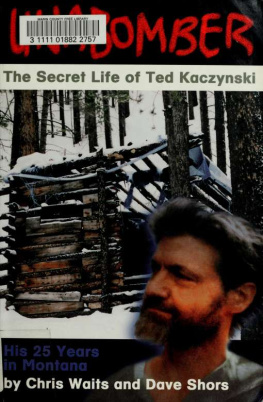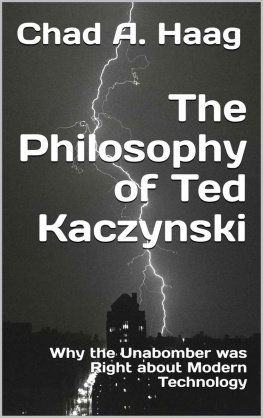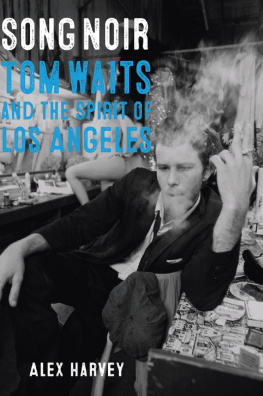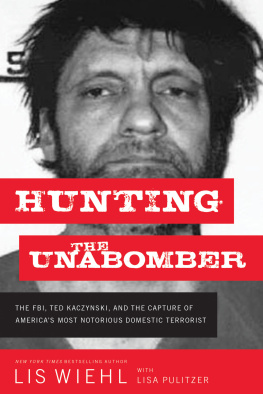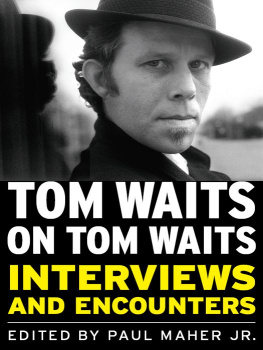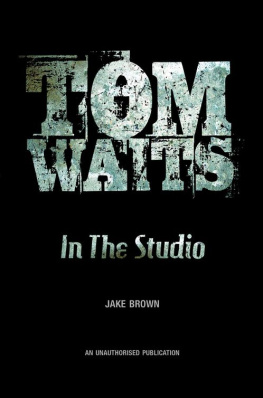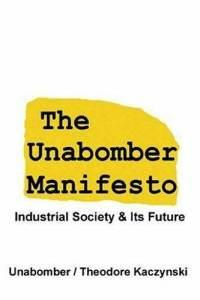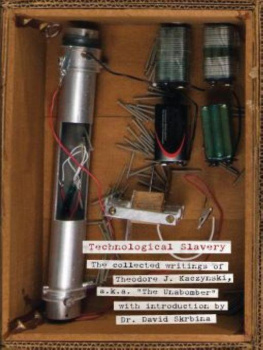This book made available by the Internet Archive.
Digitized by the Internet Archive in 2010
http://www.archive.org/details/unabombersecretlOOwait
Introduction
Ted Kaczynski is a master illusionist, a sleight-of-mind artist who based his life on deception. He shrouded his violent acts beneath the gentle facade of a Montana hermit, pulling doves of innocence out of his scruffy beard, smelly clothes, and non-intrusive lifestyle while he injured and killed people with his deadly bombs.
Who would have thought on the morning of April 3, 1996, when the spring Chinook winds were thawing the small mountain community of Lincoln out of the grips of a long winter freeze, that Kaczynski's deadly bag of tricks would be exposed that very day.
By mid-day, Lincoln was abuzz. In the middle of the morning, Kaczynski had been tricked into coming out of his one-room cabin and was in the custody of federal agents. In the early evening dusk he was being transported along the same gravel Stemple Pass Road where he had often walked and ridden his bicycle, on his way to a small FBI office in Helena.
By midnight, when he was safely incarcerated in Lewis and Clark County Jail in Helena, the town of Lincoln had been jolted into the million-watt limelight of world attention, never to be the same again.
Chris Waits awoke that same April day in nearby McClellan Gulch, knowing dozens of federal agents were in Lincoln scrutinizing his friend and neighbor of nearly twenty-five years. At first Waits thought the investigation might be related to hunting violations, since Kaczynski lived off the land, and had shot deer and elk out of season for many years.
But there was too much attention, too many federal agents lurking in the Lincoln area for a mere poacher to warrant.
The Unabomber, though.^ Never. Waits was as shocked as the rest of the community when he learned Kaczynski was a suspect, and even
defended his iniioecnee until the oxerwhehiiin^ physieal evidenee mounted.
Kaezynski's arrest shook Waits to the eore and initially made him fear that he mi!;ht e\ en be a suspeet in the ease.
As the in\ estimation unfolded and Waits was eleared of any possible inxolvement, the FBI's evidence search extended far beyond Kaczynski's small Lincoln cabin. Agents played a cat-and-mouse game w ith Waits while searching the rugged mountain terrain near his home.
What were they looking for.^ Waits determined it was something critical, something that would help prove the government's case against Kaczynski. And Waits was certain the evidence was hidden in the thousands of timbered acres behind his house in McClellan Gulch.
FBI agents were reluctant to involve outsiders, so Waits decided to start his own search, and spent all his free time combing the back-country.
He hiked many back-country game trails looking for evidence that included Kaczynski's secret hunting camps.
Summer wound down, and Waits still hadn't discovered the key evidence everyone was after.
By late November a major arctic cold front threatened to turn the rugged mountain terrain into a no-man's land. Waits decided to take one last trip into the backcountry. As the day wore on, it seemed to be another futile search. Trudging through the snow in the late afternoon, Waits decided to drop off the mountain and return home. Yet a strange premonition pushed him farther into the mountains as darkness settled.
Something forced him to cHmb one last steep slope. He looked through the stands of lodgepole pine in the dimming light and saw the ghost image of a small log cabin. It was a secret shack and hideout Ted had built years earlier.
The discovery opened many doors with the FBI, as Waits later became a confidant and was tagged as a trial witness.
Who would have thought Lincoln could be the lair of one of the most threatening domestic terrorists in our history.^ The mere threat of his bombs could paralyze the nation or close down airports. He deceived two of the country's most prestigious and powerful newspapers into publishing his 35,000-word manifesto. In return, he wrote.
he would stop killing people. But he continued to build more sophisticated devices and plot further acts of revenge.
As millions of Americans and the entire human community hungered for more information about Kaczynski after his arrest, sketchy details portrayed him as a mathematical genius and former Berkeley math instructor who had left academia to become a mountain hermit.
Stories focused on his early years in the Heartland, academic successes at Harvard, Michigan, and Berkeley, his reclusive childhood and failed forays into the world of lasting relationships.
But then in 1971, when Kaczynski built his cabin on a heavily timbered 1.4 acres in Florence Gulch within a mile of Stemple Pass Road, he literally dropped off the face of the earth.
During the next twenty-five years, almost half of his life, he survived as a primitive hunter-gatherer, much like the early miners and settlers who moved into this untamed part of the West in the mid-19th century.
But this was not Henry David Thoreau, living the peaceful life at Walden Pond. This was Theodore John Kaczynski, a criminal willing to kill at the slightest provocation of the technological armor tentacle of an octopus, as he would describe itof our society.
He lusted for revenge. He wanted to rub his hands in the blood of modern technocrats. Only the death of a scientist, businessman or a Communist would ease the pain of his hatred.
How do we know this.^
Not because Ted's secret twenty-five years were scrutinized during a public trial. The details of his twisted logic and hatred would have been aired before a shocked world-wide audience had he faced twelve jurors in Sacramento Federal Court. His thoughts, plans of revenge, and descriptions of his life would have amazed the people he threatened.
The FBI and the prosecution team had a detailed description of Kaczynski's life of crime, because he was a prodigious writer. His small cabin, heated only by a wood stove and with none of the conveniences of our time, was an archive of his written word. Organized in volumes of scratchpads, pocket notebooks and three-ring binders were some 22,000 pages of his life's script.
Most of his work was handwritten in English, some in Spanish.
The most incriminatin
When the FBI returned to Lincoln during the summer of 1997 to study the evidence found in the secret cabin and to search other areas of McClellan Gulch, Waits guided them through the terrain he knew so w ell. During the search Waits became the first outsider to see and study many of Kaczynski's documents, w^hich included hundreds of pages from the Unabomber's personal journals.
As he worked with the FBI, Waits compiled notes daily and committed as much of the material to memory as possible.
Kaczynski's journals also described buried caches of ammunition, bomb parts, and food on W^aits' land.
W^aits was sure Kaczynski also had a cache hidden in McClellan Gulch containing copies of journal notes and his bomb experiments.
After FBI agents returned to Sacramento to prepare for the trial, Waits continued his search for the hidden caches and other evidence. Through his searches, and several unnamed sources, he finally obtained the motherlodeliterally hundreds of pages of Kaczynski's personal journals and notes.

